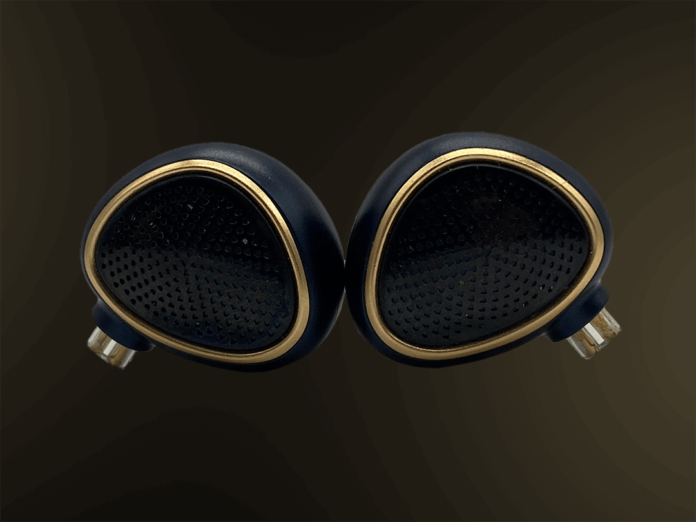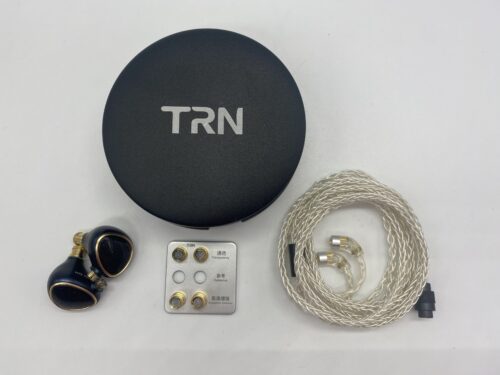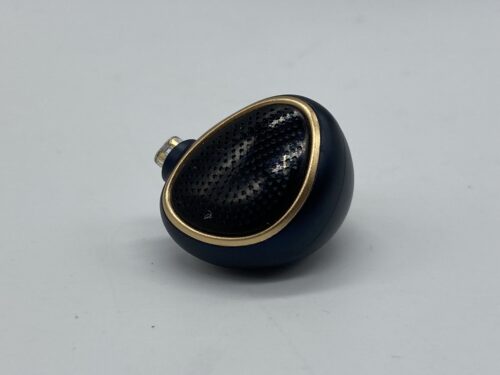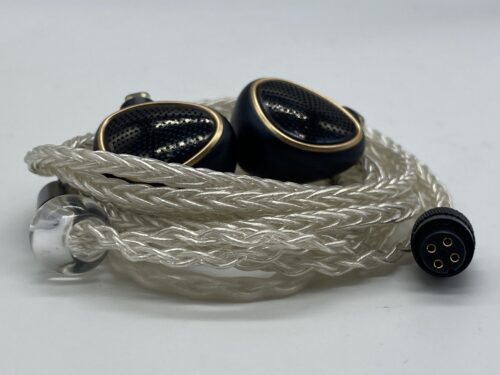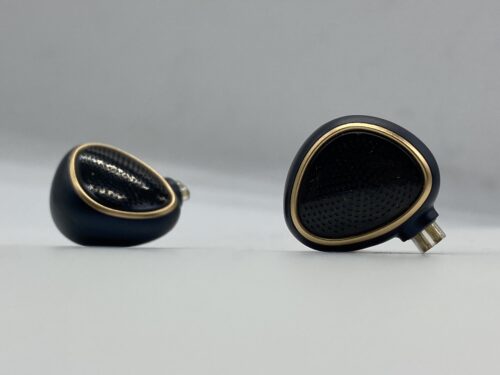I’ve reviewed a few different IEMs from TRN in the past, and I’ve appreciated their level of quality for such economical prices. It’s another brand for budget IEMs that have an impressive sound, with notable efforts like the BAX and ST5. Now TRN is taking a big swing with a pair of planar IEMs. More planar IEMs keep popping up, but I did not expect TRN to develop one themselves, especially for only $129. Let’s see how it compares.
What You Get
- Kirin planar IEMs
- Aluminum storage case
- 2-pin 8-core silver-plated cable
- 3.5mm, 2.5mm, and 4.4mm detachable terminations
- Quarter-inch adapter
- 6 pairs of silicone ear tips
- One pair of foam ear tips
- 3 sets of tuning nozzles
Look & Feel
The Kirin doesn’t have a conventional shape for an IEM. It has a large magnesium alloy housing that feels high-grade and looks special. You might think that its front plate has an open-back grille, but that’s just the design. Along with its replaceable nozzles, everything about this build reflects great craftsmanship. The housing is still quite large though, and that could be a detriment to how you wear them. For me, the fit was not much of a big deal. They felt comfortable enough without fatigue and never felt like they were stretching my ear cavity.
Design
Built into the TRN Kirin is a 14.5mm planar driver. It uses nano-grade technology with a custom acoustic structure comprised of asymmetric magnetic circuits that aim to reproduce accurate imaging. Even with its planar design, you should have no problem driving the Kirin from most headphone outputs.
Soundstage
The Kirin gets a lot of things right on its soundstage. It’s a fully stereo presentation and feels very open. It’s almost exactly the soundstage I would come to expect from planar IEMs. From left to right, the Kirin shows a lot of spaciousness. Its width is a major highlight, as the wingspan of every track feels grand like the music surrounds your ears. That is the extent of the Kirin’s ability, as spatial imaging isn’t as much of a showcase.
You mainly get the left, right, and middle of each track, without much highlighted movement in between. There’s some great layering here, and everything is placed accurately in the mix. In terms of imaging, the Kirin does everything just right, but it doesn’t have that pealed-back dimension to it as other IEMs with great soundstages do. It ends up being a minor criticism, as everything else about the Kirin here is so effective, and it doesn’t keep the sound from feeling immersive.
Low End
I mainly used the reference nozzles for this review, and I was still surprised by the tuning of the lows here. It’s a very dynamic performance that doesn’t have a ton of consistency but feels richly detailed. You can feel it emanating softly from the sub-bass, and it provides a bodied impact when called for. That dynamism between each range of low-end frequency is unique, and I find its progression very exciting. Timbrally, the bass is extremely smooth, and the shaking tone feels like it’s blooming from the tip of your throat.
Mids
Everything feels like where it should be in the midrange. There are no pronounced frequency bands in the low or upper mids. Like the bass, the frequencies here are detailed and smooth, favoring breathable instruments and clear vocals. Nothing really stands out, but nothing is lost in translation either. Even with its competency, the presentation of midrange sound elements can sometimes appear a bit thin. It feels like the sound signature should have a lusher quality to it, but the Kirin doesn’t quite get there.
Highs
The most colorful region of this sound signature is the high frequencies. It’s a very expressive performance that presents some bright elements, but never goes overboard. Instead, the highs are given a highly transparent ringing quality that feels like a natural part of the mix. It’s the only part of the sound signature that really comes alive, offering a glistening performance and sparkly details.
Summary
So far, TRN’s selection has been solid, but the Kirin really sets a new standard for them. It brings a lot of that planar character to a set of budget IEMs, which I think is a real accomplishment. I’ve heard some planar IEMs that are priced higher and don’t activate the level of soundstage and detail retrieval that the Kirin is capable of.
| Pros | Cons |
|
|
The TRN Kirin is available at Audio46.
Compare the ranking of various headphones, earbuds and in-ear monitors using our tools.
Discuss this, and much more, over on our forum.
---MAJORHIFI may receive commissions from retail offers.


